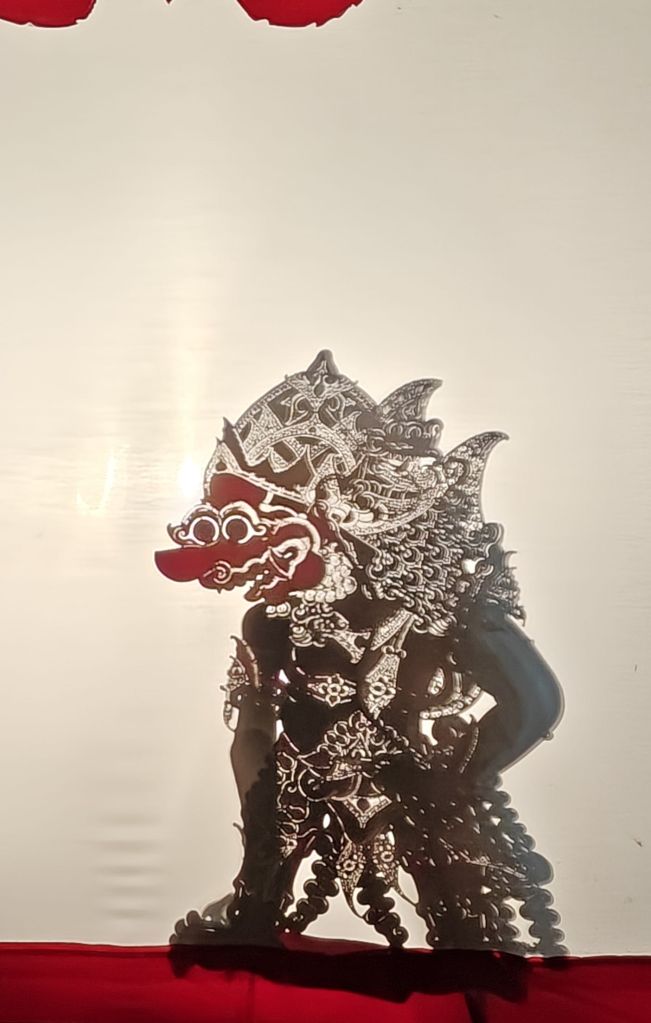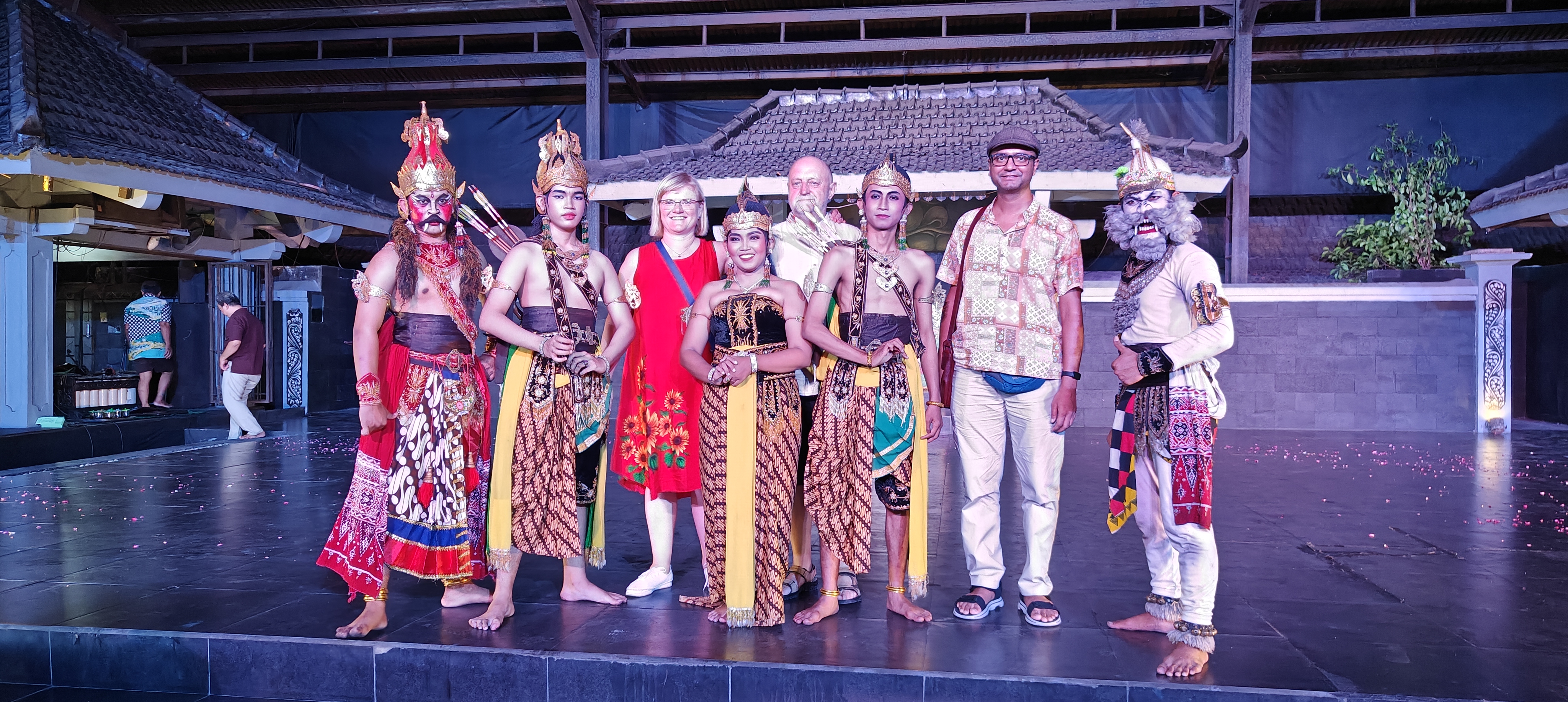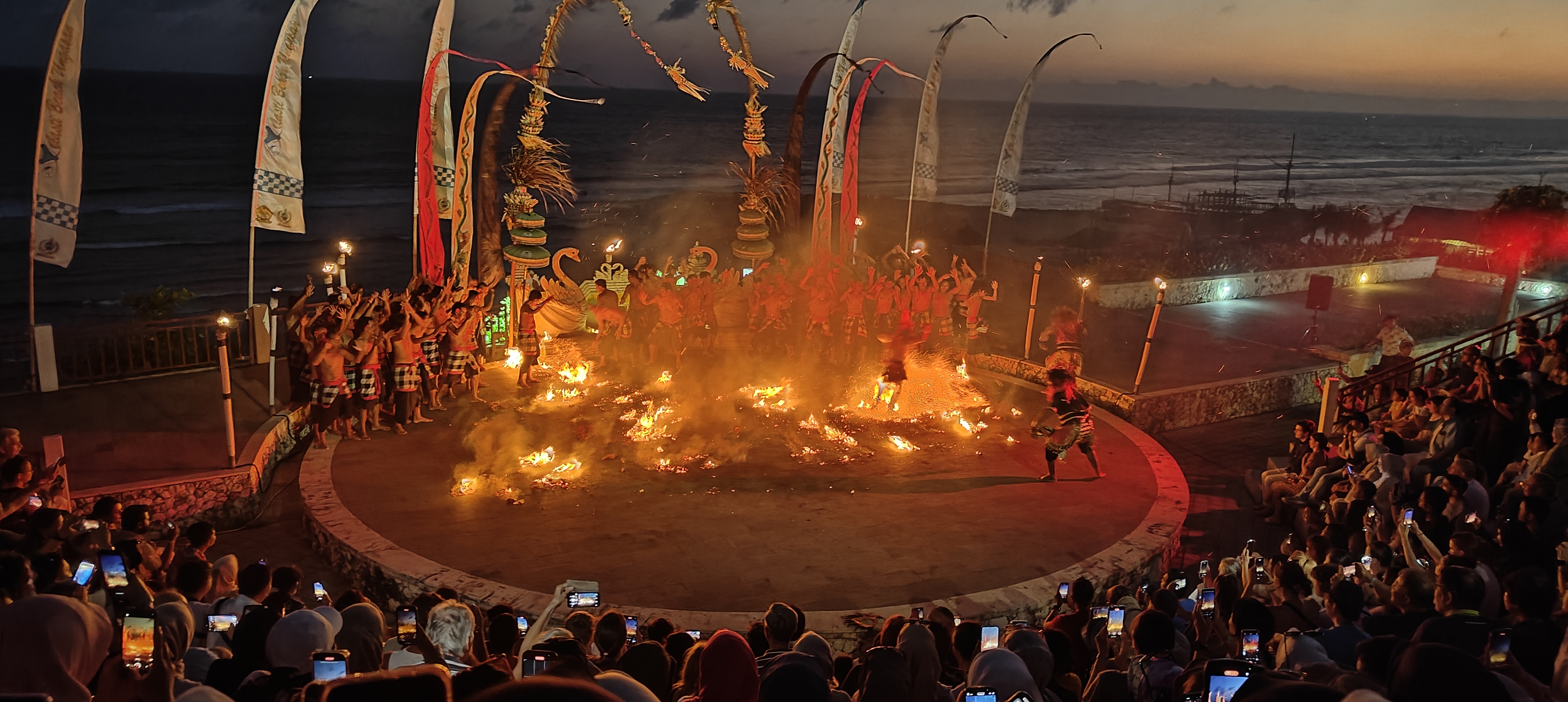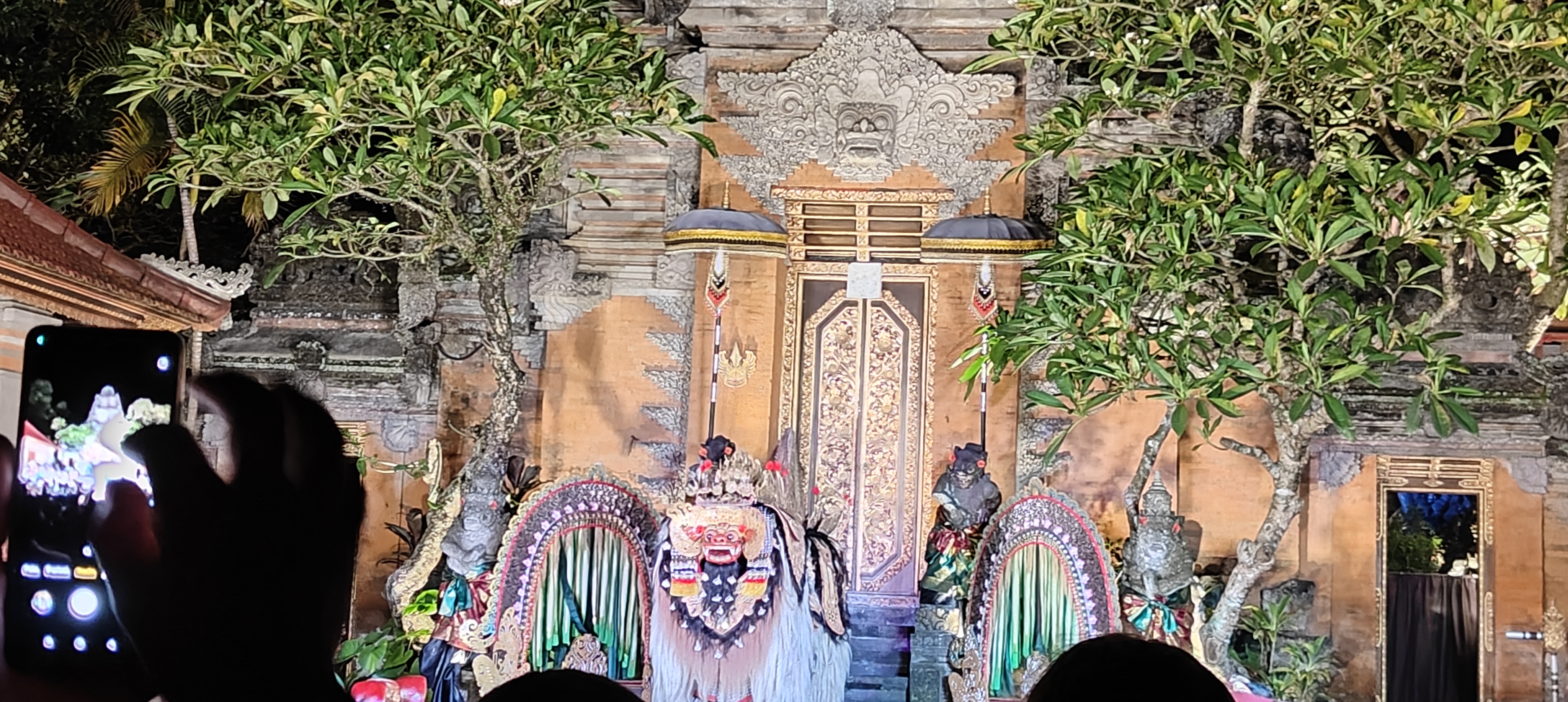Indonesia: A case study of fluidity in religion
Religion in Indonesia has its own eccentricities. It has the largest Muslim population in the world. But it’s not an Islamic country. There is no state religion. But the first of the five principles of the state, created by the dictator-president Soekarno, is belief in one God! So, it does restrict itself to monotheistic religions. Islam and Christianity are fine, but Hinduism is another major religion, especially in Bali. What would they do?
So, Balinese Hinduism has a concept of an ultimate God who created the trinity Brahma, Vishnu, and Mahesh. No temples seem to be dedicated to this ultimate God, but He exists on flags and poles in the temples. Talk about adaptability!

Hinduism, Buddhism, Islam, and Christianity – all are outside imports, of course, though at different points in history. The real native religion is like indigenous religions in many other parts of the world, filled with local deities, concerned with local problems, deities of natural phenomena, song-dance-trance rituals, etc. Trade was the primary mode of religious import in almost all cases, although Christianity has more colonial history, than that of trade. Apart from that, conquest was not the primary mode of importing religion. So, overall, every organized or imported religion has been absorbed into existing religious and cultural practices. As an outsider, this mishmash is easy to observe.
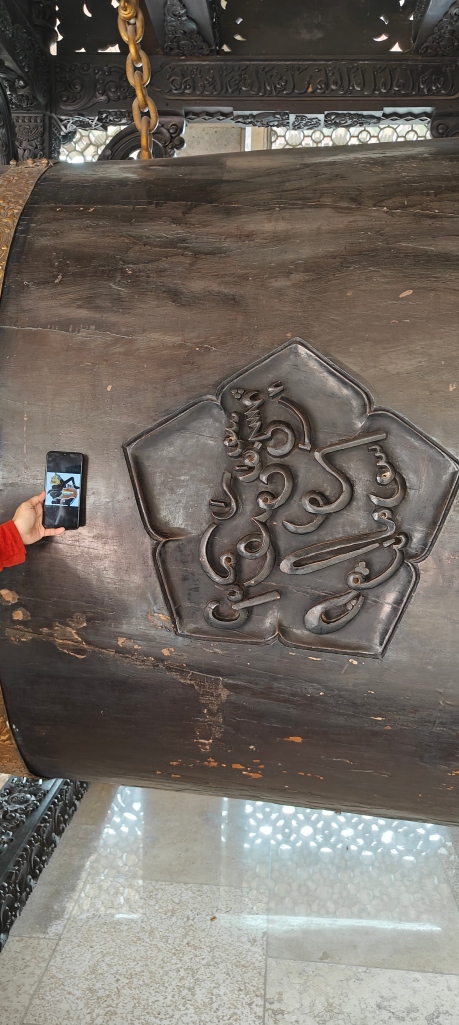
The various kinds of puppet and dance performances are very much a part of Java’s cultural heritage, which is a Muslim-majority region. Yet, the characters from the Ramayana and Mahabharata have continued to have their place in these performances along with more local characters.
Islam took an interesting turn (not great) in the late 19th and 20th centuries when “reformist” Islamic elements brought in stricter Saudi version of Islam to Indonesia. This clashed with the local “orthodox” Islam, in which local cultural elements, languages, dresses, and ceremonies were integrated with the belief in Allah and other Islamic practices. In Yogyakarta, our young female guide was covered head to toe in the resurging Islamic attire, but when we visited the mosque, which had a cemetery belonging to the Muslim Sultanate of Yogyakarta, it was essential to wear traditional dress, which did not allow women to cover their shoulders at all!
The real religion, I think, beneath the surface of the six state-recognized religions of Islam, Protestantism, Catholicism, Hinduism, Confucianism, and Buddhism, is the native animist religion. Although 20th and 21st-century Islamist “reform” may have brought some of it closer to Islam as recognized elsewhere, but I don’t think even the majority Islam with its “reforms” has removed the fundamental, local cultural elements in the day-to-day religion of people. Ancestral worship is also prevalent. I am not totally sure if it cuts across religious lines or if it is primarily a Hindu, Buddhist, and Confucian feature.
As an Indian raised in Hindu culture, Indonesia is at once familiar and unfamiliar. We watched three different types of Ramayana performances between Java and Bali. One Ramayana ballet, one shadow puppetry performance, and one Kecak dance. I do wish we could have caught a Mahabharata or some local stories in at least one of them. But Ramayana seems to rule supreme in terms of the number of performances. These are mostly watched by tourists, I think. Perhaps that’s why a more familiar story is getting used most often. One performance in the Ubud royal palace in Bali was thankfully completely local, and not another Ramayana. It was one of the best produced too.
There are signs of a grand Hindu and Buddhist past in Java, which is currently majorly Islamic and also boasts of having a modern-day sultanate (more on that later). Highlights of our tour were the sites of Borobudur and Prambanan temples. Borobudur is the largest Buddhist temple in the world. Prambanan is the second-largest Hindu temple complex in Southeast Asia after the magnificent Angkor Wat. We also visited Dieng temples, which are smaller but older than these and are among the few remaining of what may have been many such structures in the area.
Bali is still largely Hindu. But the Hinduism import is from a long time ago. So, there are things that are conspicuous by their absence for a modern-day Indian Hindu. None of the recognizable festivals from India are popular there. Diwali, Holi, Dushehra are not traditional. There are ceremonies around death (and perhaps other important life events), but they have a very different flavor than what we see in India. The biggest “festival” in Bali is Nyepi – a day of silence when streets, beaches, and even international airports shut down. Exceptions are not made even for tourists. They have to stay inside their hotels. The population will refrain from TV, radio, and even internet access. Although inside the hotels, the activities may not be restricted for the tourists.
In a Bali tourist village we went to, if we understood the local man taking us around right, then cows are regular animals and it is buffalo that is sacred in Bali! A selling point of Bali to tourists (especially internal ones) is that because it is Hindu, they don’t mind selling pork. So, apparently, the pious Javanese, who won’t eat pork in their motherland, find their freedom in Bali.
Indonesia is a fascinating case study of fluidity in religion, where the old and the new, the local and the foreign, all intermingle in an intricate dance that continues to evolve. However, the rigidity is increasing in 21st century. Much like the revival of traditionalism all around the world – in its most regressive and oppressive form. I sincerely hope that they are able to put a stop to that.

